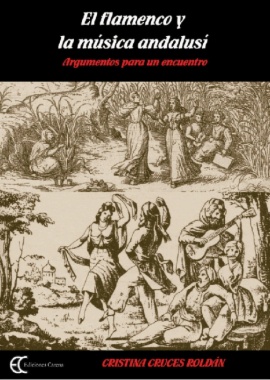

A deep study on the presence of the Arabic-Andalusian music in the Andalusian gipsy singing both in melodic aspects and in the use of instruments. More than a hundred photographies and ancient engravings illustrate a book, exceeding the borders of music, investigating the vital, literary and rhythmic affinities between the current flamenco and the andalusí music.
In this book the authoress explores some of the kinships of the andalusí music with flamenco, as an attempt of suggesting facts in their structural and historical connections. The contents of the text, with abundant documentary notes and exposed in a divulgative way, move between the examination of flamenco’s own musical systems and the Arabic-Andalusian music, the influence of nubas, moaxajas, jarchas and zéjeles in flamenco, the study of the couplet, the execution, the transmission and the instrumentation, an approximation to the dances, the festive expression and the role of the ethnic groups of moriscos and gypsies, and a last note about the ultimate meaning of the music that they share. Inheritances and coincidences are revealed, helping to fill in this way the investigative emptiness that still exists in the comparative analysis of the musical systems and rituals of flamenco and arabic music. It is a fundamental text to reconstruct the Andalusian musical culture.